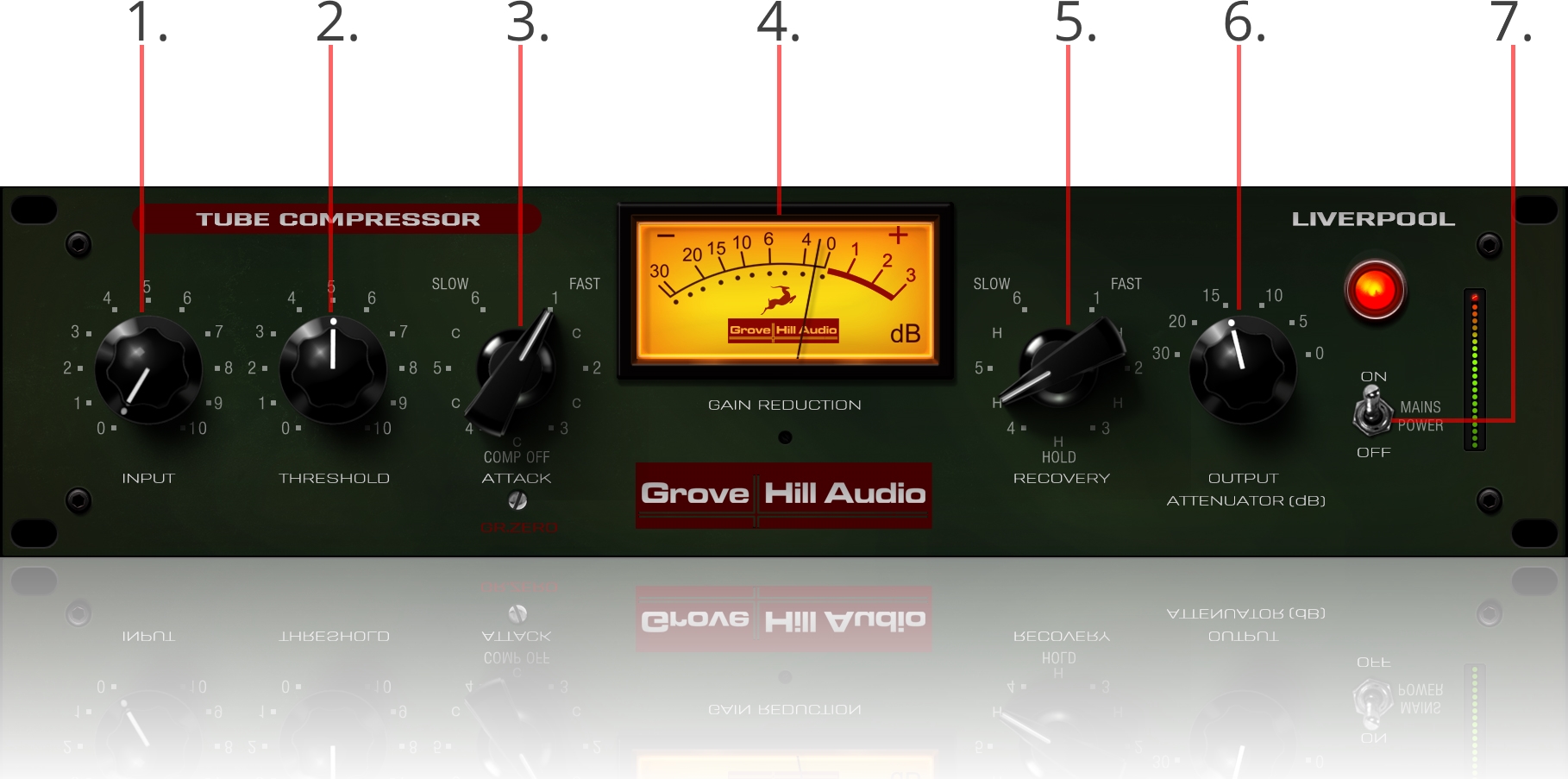5. Hold Function Explained
When trying to process the initial attack of an audio track, the slow attack of the compressor will cause an audible thump to be produced. In such cases, the Hold function is used to “prime” the compressor with the required amount of gain reduction first, thus preventing the thump from occurring.
This is done by playing a track into the compressor, setting the controls as required, then moving the Recovery control to one of the Hold positions. This prevents the compressor release from taking place, maintaining the amount of gain reduction.
The track can then be stopped and played from the beginning. Once the initial attack of the first note has been processed, the compressor can be switched out of Hold and put back to the desired Recovery setting.
If the unit is compressing a track with room ambience, the ambient noise from the recording would swell up in volume at the end of the performance as the gain reduction returned from the compressed level to zero.
This can be avoided by switching the Recovery control to an adjacent Hold position after the last note has finished, which would stop the compressor release from taking place.

